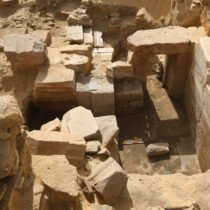The protection of the modern architectural heritage in Greece has been mobilized very late and has achieved very little. Thus, today the issue of protection is essentially confined in a rearguard action, since the looting of our modern monumental wealth has been almost com¬pleted. The efforts for the protection of the remnants of our architectural heritage have been channeled towards two basic directions: the characterization of isolated buildings, mostly Neoclassical ones, as “preservable” and the proclamation of some hundreds of settlements as “traditional”. However, the institutional framework that has been created does not suffice for the protection of our architectural heritage mainly for three reasons:
1. Our legislation does not cover entirely the object under protection. It is quite indicative that only a few buildings dating from the phase of Neoeclecticism of the early twentieth century or from the inter-war period have been characterized as “preservable”. While in the so-called traditional settlements the protection is limited to special building regulations that hardly or at all provide for the protection of the existing architectural wealth, the architectural ensembles and the public space in particular.
2. Since the existing institutional framework promotes the passive rather than the active protection, the latter should be reinforced through appropriate, effective motives.
3. In the way the protection is materialized, it is confined to the reconstruction of some building shells, but it does nothing at all for their incorporation in the life of the modern settlement. This approach often contributes to the disorganization of the social tissue and to the creation of a ghetto phenomenon. Nevertheless, the well-studied incorporation of the remnants of our architectural heritage plays an important role in every effort for the upgrading of historical centers and settlements and can decisively contribute to the enrichment of the meaning of the town/city and to the enhancement of its physiognomy.


